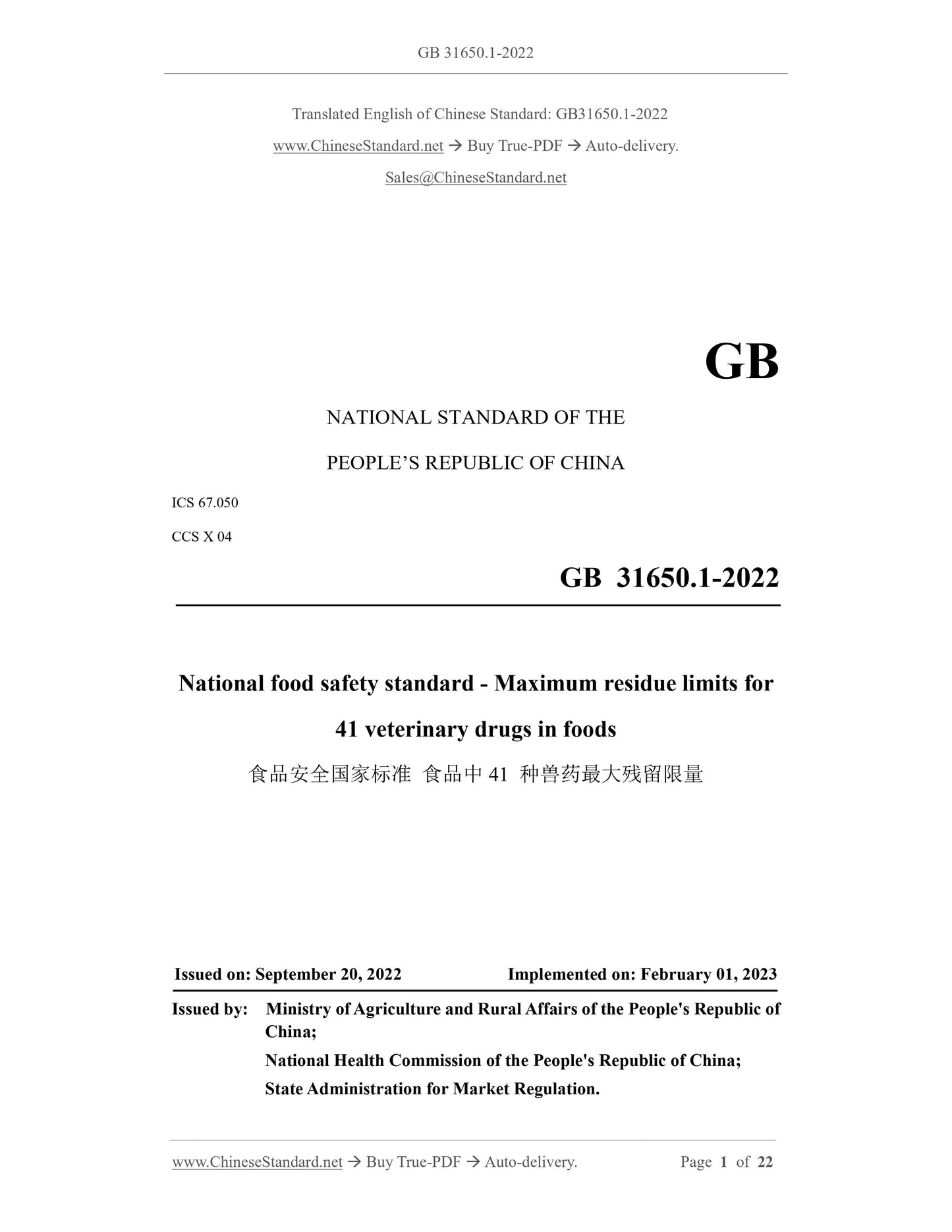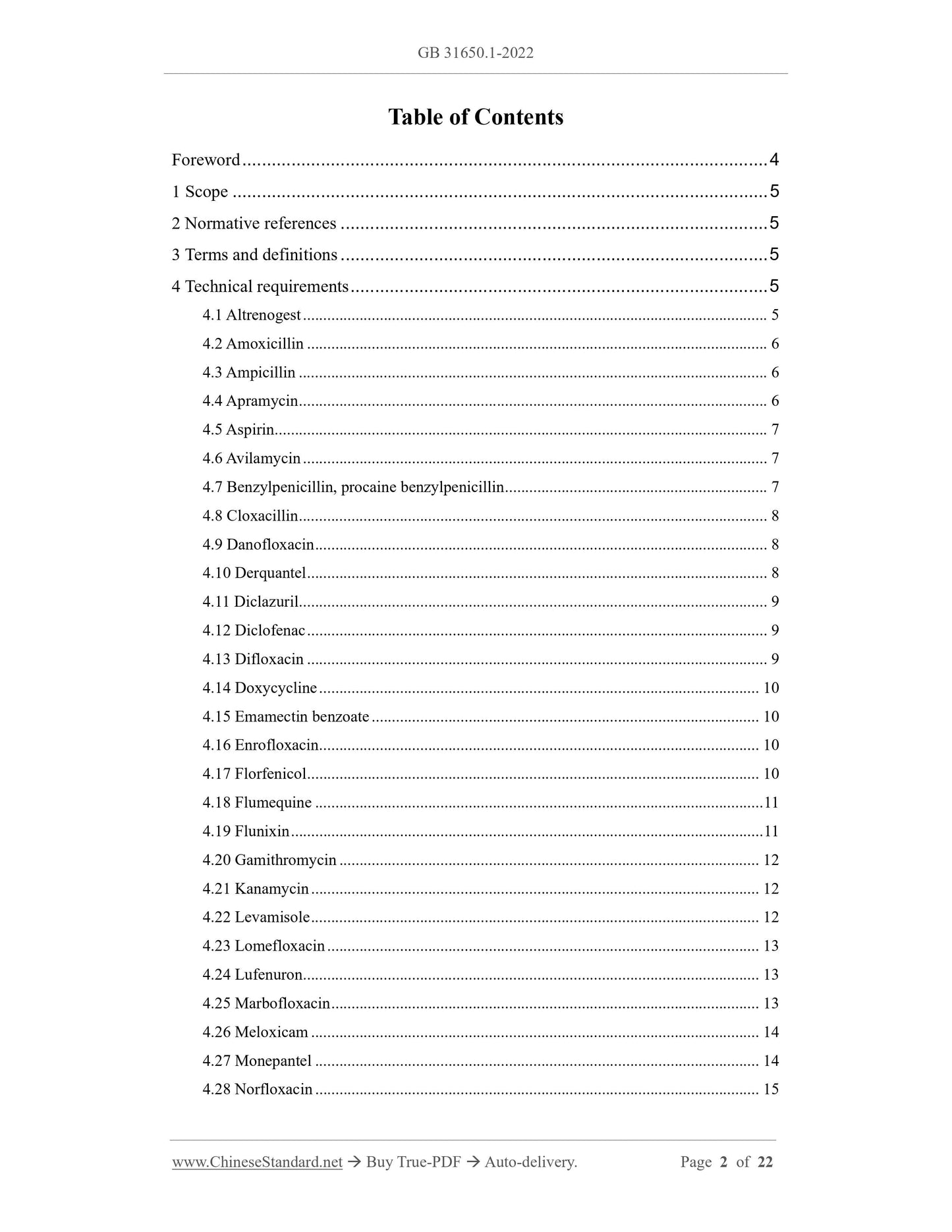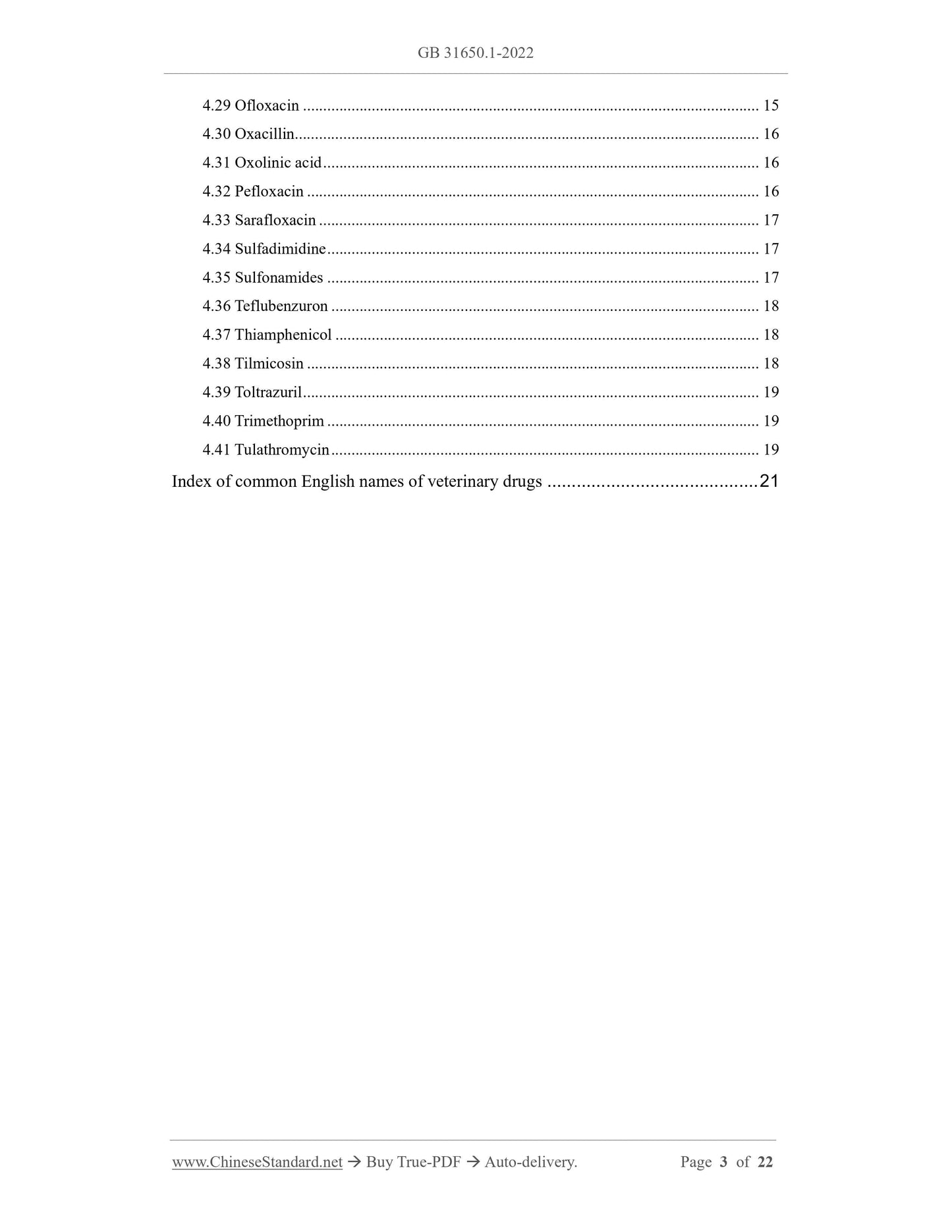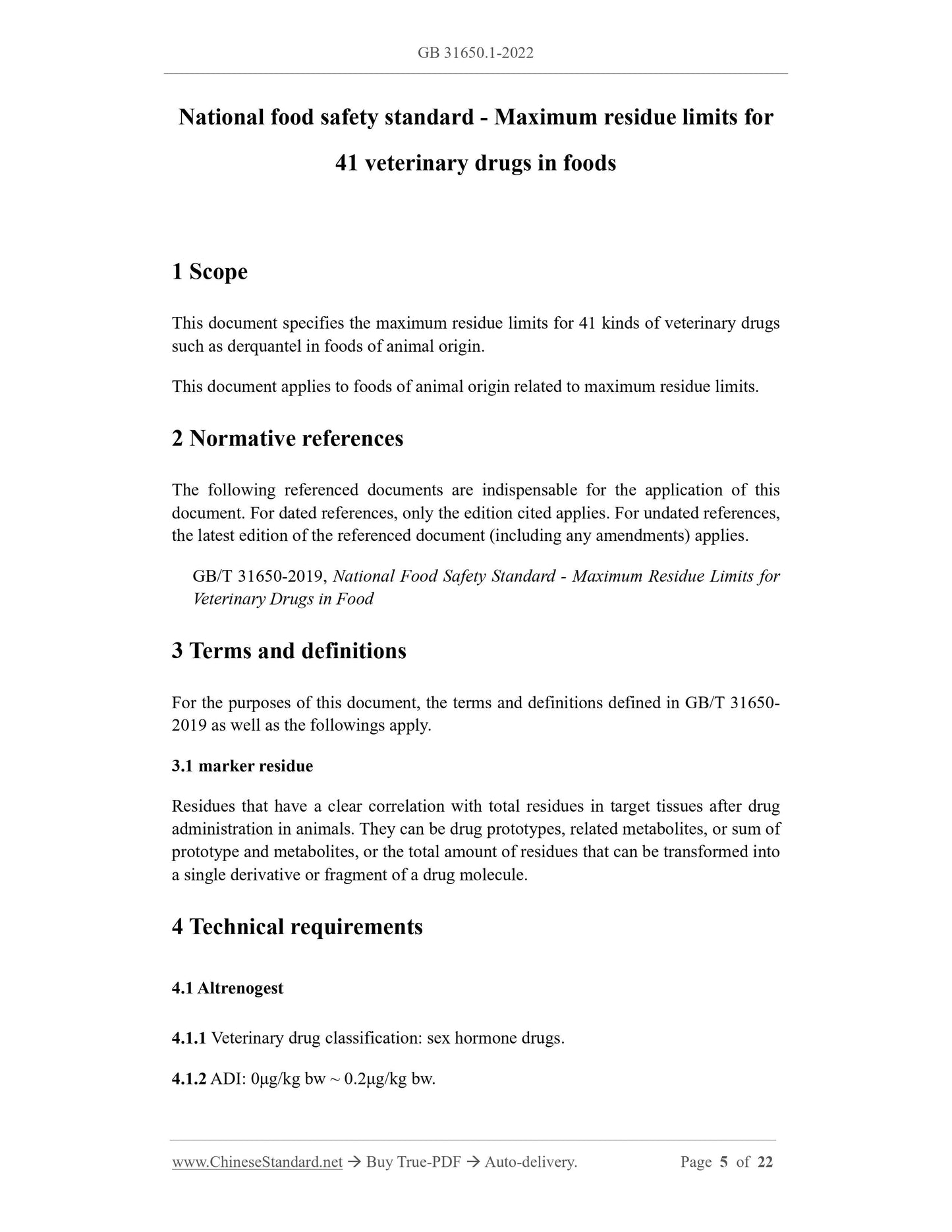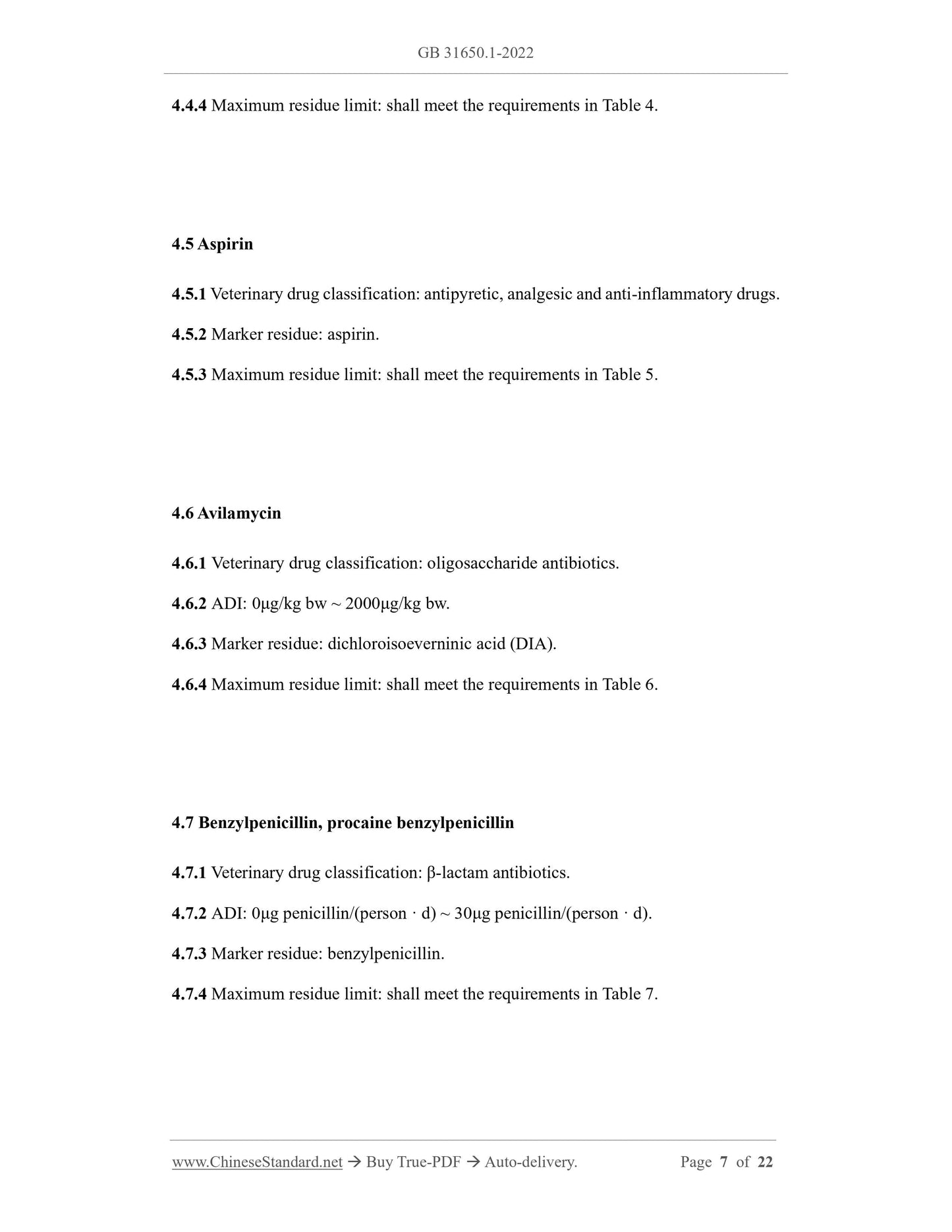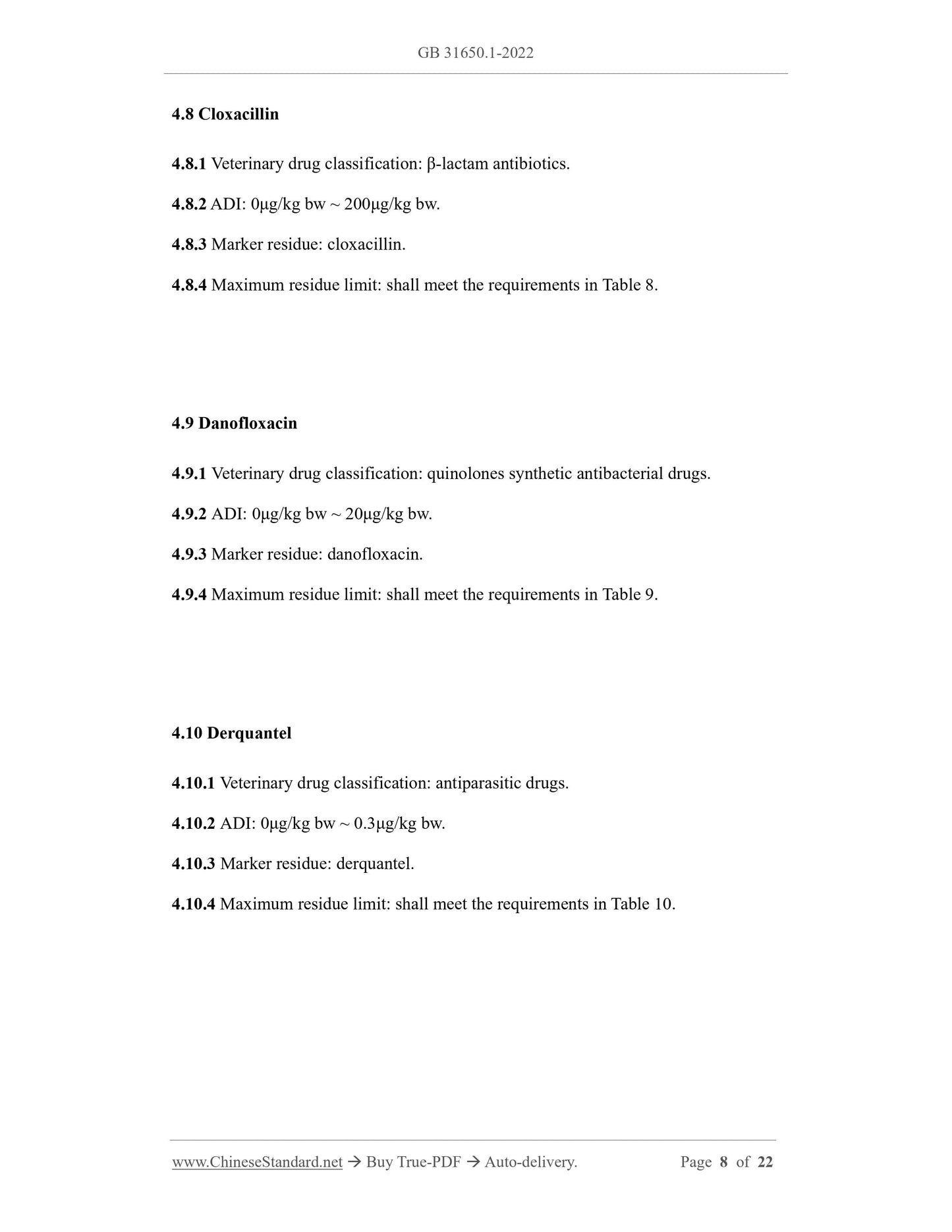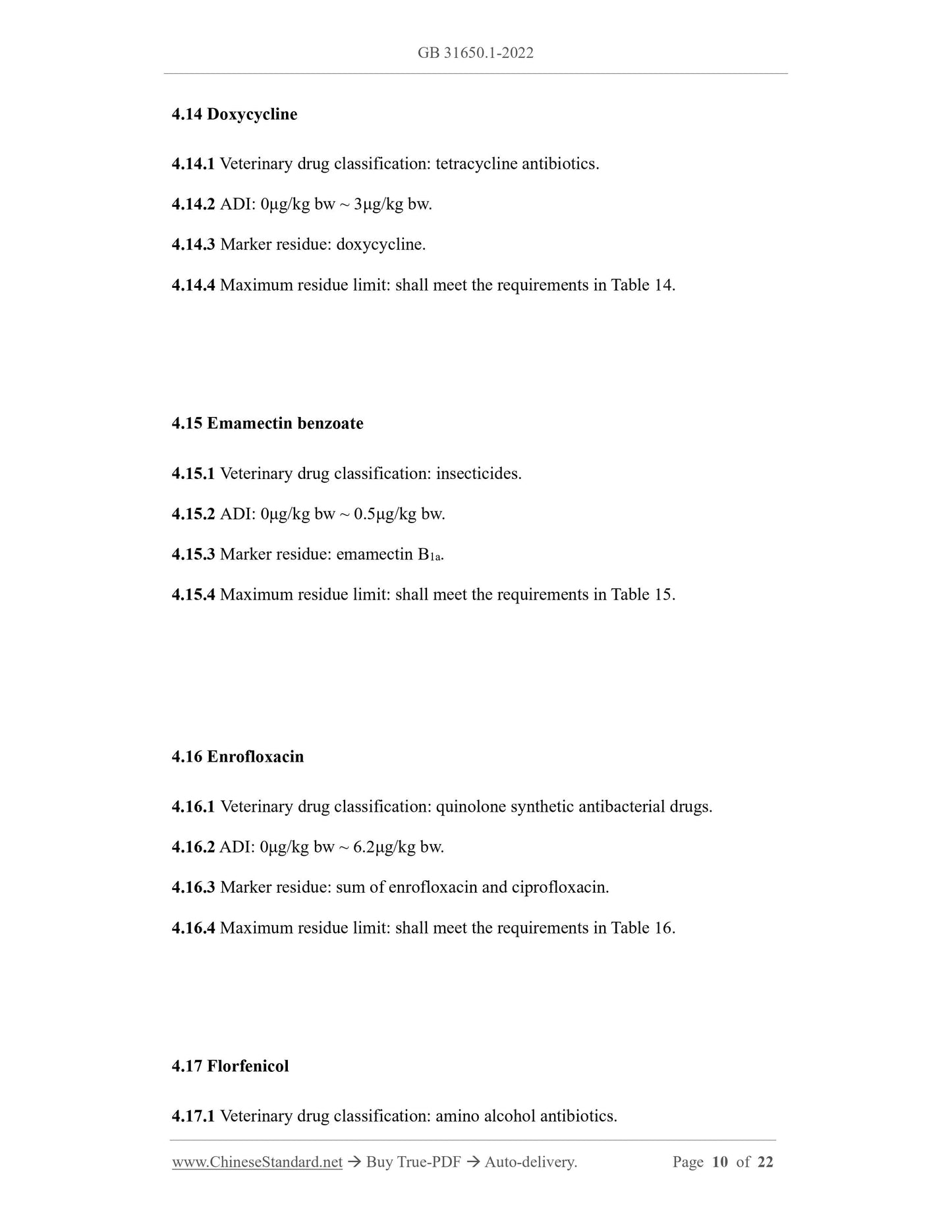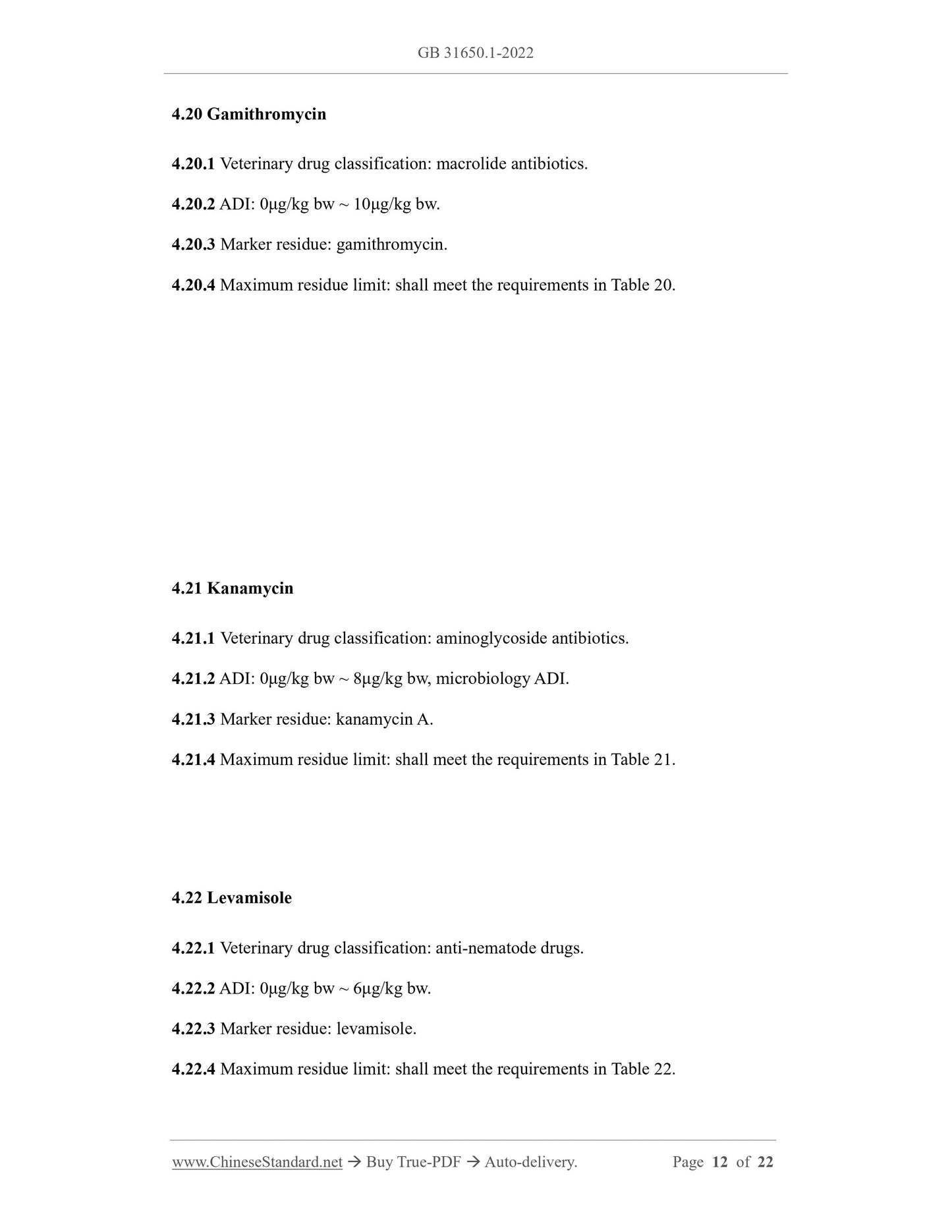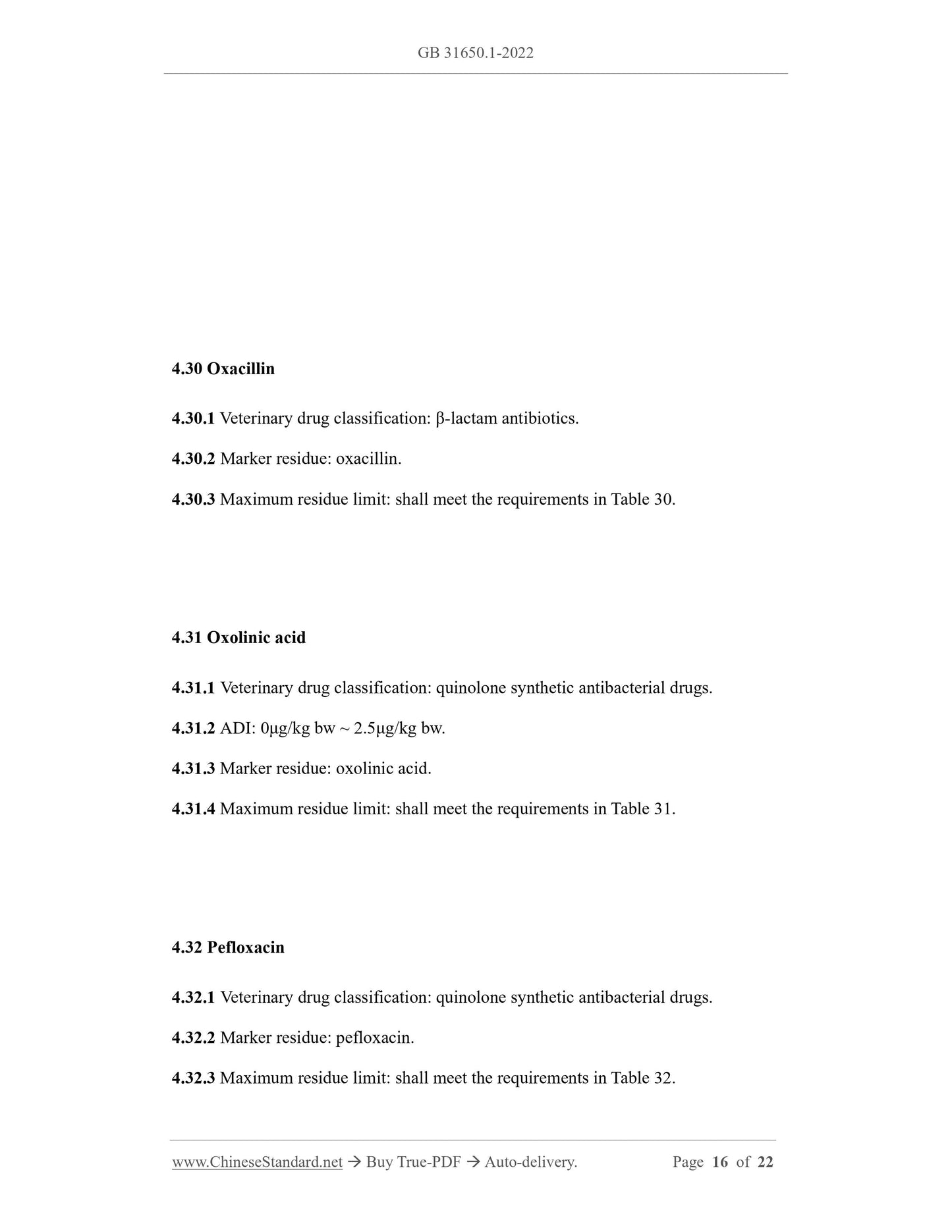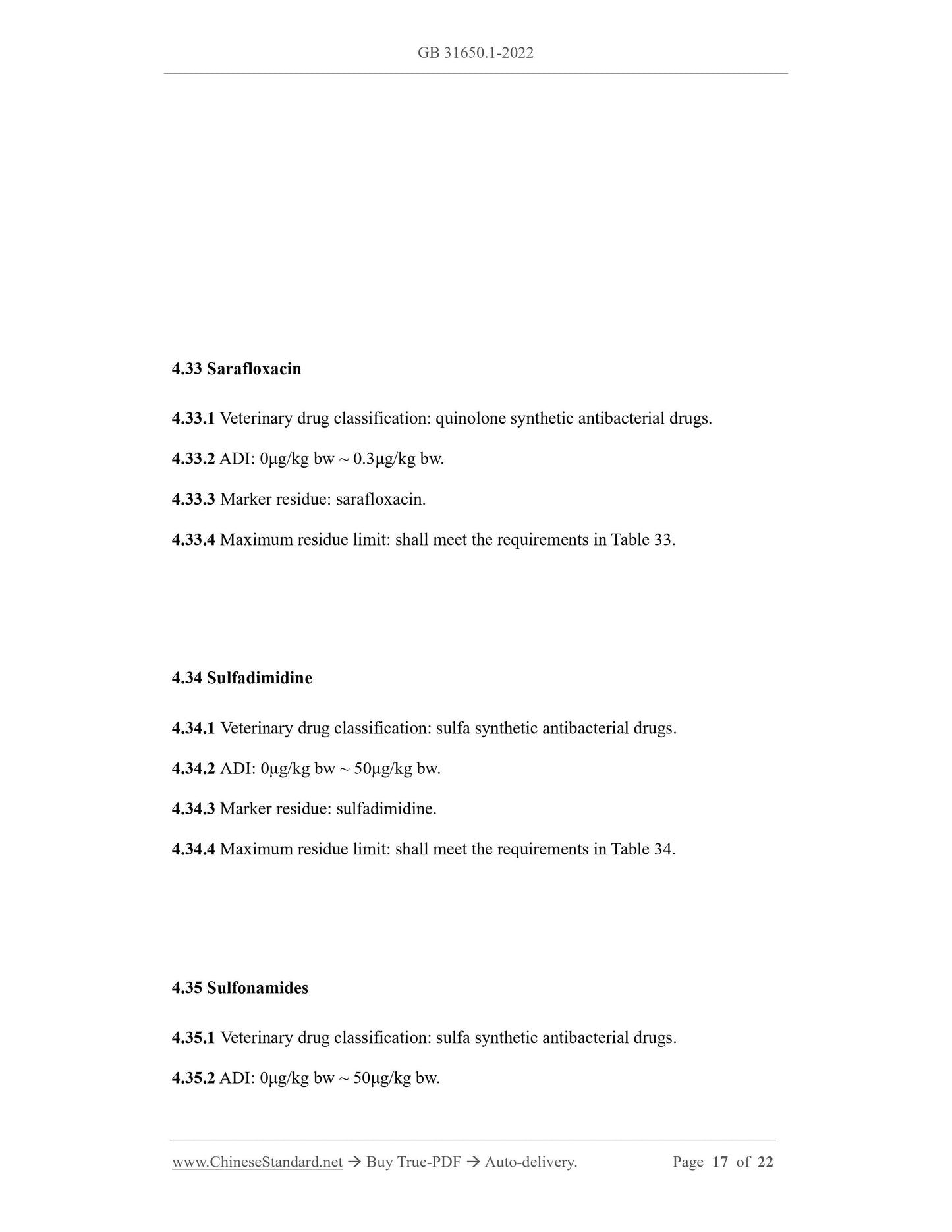1
/
of
10
www.ChineseStandard.us -- Field Test Asia Pte. Ltd.
GB 31650.1-2022 English PDF
GB 31650.1-2022 English PDF
Regular price
$260.00
Regular price
Sale price
$260.00
Unit price
/
per
Shipping calculated at checkout.
Couldn't load pickup availability
GB 31650.1-2022: National food safety standard - Maximum Residue Limits for 41 Veterinary Drugs in Foods
Delivery: 9 seconds. Download (and Email) true-PDF + Invoice.Get Quotation: Click GB 31650.1-2022 (Self-service in 1-minute)
Newer / historical versions: GB 31650.1-2022
Preview True-PDF
Scope
This document specifies the maximum residue limits for 41 kinds of veterinary drugssuch as derquantel in foods of animal origin.
This document applies to foods of animal origin related to maximum residue limits.
Basic Data
| Standard ID | GB 31650.1-2022 (GB31650.1-2022) |
| Description (Translated English) | National food safety standard - Maximum Residue Limits for 41 Veterinary Drugs in Foods |
| Sector / Industry | National Standard |
| Classification of Chinese Standard | X04 |
| Word Count Estimation | 18,185 |
| Date of Issue | 2022-09-20 |
| Date of Implementation | 2023-02-01 |
| Issuing agency(ies) | National Health Commission of the People's Republic of China, State Administration for Market Regulation |
Share
